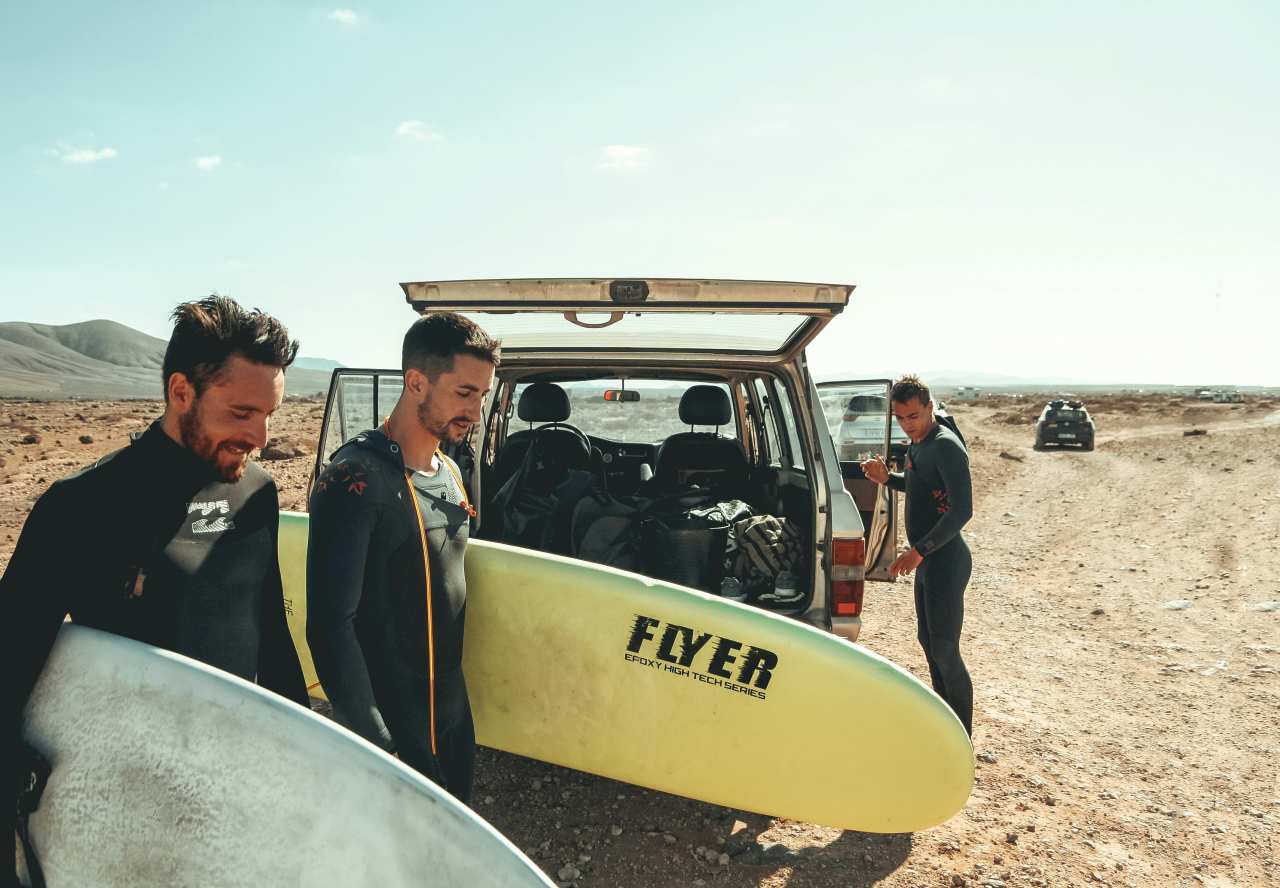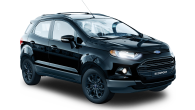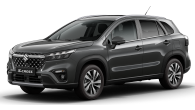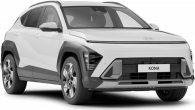The small SUV segment of the Australian car market is chock-a-block with vehicles – and Mazda has carved out its own niche in the crossover SUV realm with its popular CX-3 range.
The Akari Luxury Edition (LE) is the line-up’s top-shelf model. It’s front-wheel drive, perky, a tad squeezy inside and more than a little bit posh.
The CX-3 has a pretty good rep for on-road ride and handling, but how does the flagship model cope when you drive it off the bitumen and hit the gravel or dirt? Read on.
Mazda CX-3 2019: Akari Le (Fwd)
| Engine Type | Inline 4, 2.0L |
|---|---|
| Fuel Type | Unleaded Petrol |
| Fuel Efficiency | 6.3L/100km (combined) |
| Seating | 5 |
| Price From | $18,700 - $23,650 |
| Safety Rating |
|
Does it represent good value for the price? What features does it come with?
The Akari LE Front Wheel Drive is $35,500 (manufacturer suggested retail price).
Above and beyond the rest of the range’s lists of standard features, the LE has a stack of gear befitting a top-spec model including Nappa leather seats, 18-inch allow wheels, a power sliding-and-tilt sunroof, heated front seats with 10-way power adjustment and memory settings, 360-degree view monitor, adaptive LED headlights, lane-departure warning and more.
Apple CarPlay is not onboard yet, but Mazda owners will soon get the option to have kits installed at an expected cost of $500.
It has a five-star ANCAP rating and safety gear includes Mazda’s Smart City Brake Support (an AEB equivalent), blind spot monitoring, and as already mentioned lane departure warning.
Is there anything interesting about its design?
CX-3s don’t get by on their looks alone but that’s why a lot of people seem to buy them and, for good reason, because they are very easy on the eyes, no doubt about that.
Inside is suitably plush – with a clear, clean lay-out and a real prestige look and feel about the entire interior.
Fit and finish is impressive, nice and solid, and there are plenty of soft-touch surfaces.
There were nice white leather sections in our tester – the alternative is Dark Russet nappa leather in the Akari LE – but good luck keeping those bits clean if you plan on doing any adventuring outside of the city limits.
What are the key stats for the engine and transmission?
The Akari has a 2.0-litre four-cylinder petrol engine – producing 110kW at 6000rpm and 195Nm at 2800rpm – and a six-speed automatic transmission.
.jpg)
It’s a mostly workable pairing although the CX-3 tends to hold gears for too long and it’s a much better drive if you cycle through the transmission in manual mode.
How practical is the space inside?
.jpg)
It’s on the right side of practical but it’s on the wrong side of tight. Stay with me here.
Fair enough, the driver and front passenger get room enough – head, shoulders, legs – but over the back things get a bit squeezier.
Legroom in the back seat is okay for an adult, but not great – you feel cocooned in here rather than cosy. Throw your two kids in here – or one of your vertically-challenged mates – break up the travel time into two-hour chunks, and it’ll be fine.
.jpg)
There are several storage spaces around the small cabin: glovebox, bits-and-pieces receptacle in front of the shifter, two cupholders between driver and passenger, as well as two in the back-seat’s centre fold-down armrest, single-bottle holders in all doors, and seat-back map pockets.
Boot space is 264 litres with the seats up, so that means you’ll have to pack creatively – read: don’t take much – if there are four of you.
That cargo space grows to 1164 litres with the seats down so the Akari is a more appealing packing proposition if it’s two mates or a kid-free couple.
.jpg)
What's it like as a daily driver?
At 4275mm long (with a 2570mm wheelbase), 1765mm wide, 1535mm high, and with a kerb weight of 1309kg, the Akari is a light, compact vehicle and feels balanced and responsive when on the move.
.jpg)
It’s nice to drive: the tilt-and-telescopic-adjustable steering is pretty precise on all surfaces, vision is good all round, and that engine and auto work well together. Mostly. It tends to hold gears for too long – especially on long, gradual uphills – and, as mentioned, is much more lively a drive if you’re in manual mode.
It does, however, sit nicely on the road – squat and settled and composed – and its suspension is alright on bitumen, and even gravel roads, although it can be firm, even quite harsh, when driven through surface irregularities that are particularly sharp or deep.
With a 10.6m turning circle, the Akari is an easy turner in the city or on a tight bush track.
What's it like for touring?
The CX-3 is no off-roader, not by a long shot, but Mazda doesn't claim that it is. So use your common sense if you’re thinking of taking one of these off the bitumen and onto anything even marginally more challenging than a regular tar surface. By its very nature, the CX-3 isn’t suited to much beyond well-maintained bush tracks or gravel roads. We drove it on terrain that likely sits outside the parameters of what most sensible CX-3 owners should tackle in their Mazda.
.jpg)
In terms of ride and handling, the Akari is a bit firm and tends to get skippy on rougher patches, but it’s generally fine.
Ground clearance is minimal – listed as 155mm (laden) – and the Akari tends to pick up all fallen sticks on the track, no matter how small; you have to avoid all substantial potholes and ruts, the 18-inch wheel-and-tyre combination is more suited to the city than the country … but beyond that it’s more than able of coping with surfaces you’ll likely find on the way to numerous campsites.
However, if you plan to do a lot of adventure driving, the all-wheel drive version of the CX-3 could be for you – and there are several versions available across the line-up, so it can be a reasonably budget-friendly option as well.
NVH levels are generally good but it tends to become a lot noisier inside on rough surfaces and when you give it a fair bit of right boot.
The Akari has a towball download maximum of 50kg, 640kg unbraked towing capacity and 1200kg towing capacity (braked) – so if you plan to tow doing any heavy-load towing then your best best is to focus on buying a bigger vehicle.
How much fuel does it consume?
Best fuel consumption is listed as 6.3L/100km (combined). We recorded 8.1L/100km on test after more than 400km of driving and that included on plenty of gravel roads. The Akari has a 48-litre fuel tank.
Warranty & Safety Rating
What safety equipment is fitted? What safety rating?
The Akari has a five-star ANCAP rating. It has, among other things, six airbags, Mazda’s AEB system, blind spot monitoring, lane departure warning, reversing camera, two ISOFIX points, three top tether points and that handy 360-view monitoring system.
What does it cost to own? What warranty is offered?
The CX-3 range has a five-year, unlimited kilometre warranty.
Servicing is scheduled for every 10,000km/12 months and costs $289, $317, $289, $317 and $289.
Verdict
This is the good-looking alternative to a sporty city-based hatch that so many people are apparently lusting after.
There are cheaper, roomier and more practical compact SUVs on the market – like the Mitsubishi ASX and Honda HR-V – and there are even very capable purpose-built small 4WDs, such as the Suzuki Jimny, but the CX-3 straddles the great divide between city and country pretty well.
Sure, in a CX-3, you should avoid anything more challenging than well-maintained gravel or dirt roads but you can still have plenty of adventures in something like this, even a front-wheel drive version.
And the Akari LE gives you the opportunity to tackle off-bitumen trips on the way to your favourite campsite with a real sense of confidence, style and more than a little of substance.
Pricing Guides








.jpg)
.jpg)
.jpg)
.jpg)
.jpg)
.jpg)
_0.jpg)
.jpg)
.jpg)
_0.jpg)
.jpg)
.jpg)
.jpg)
.jpg)








.png)










.jpg)


.jpg)
